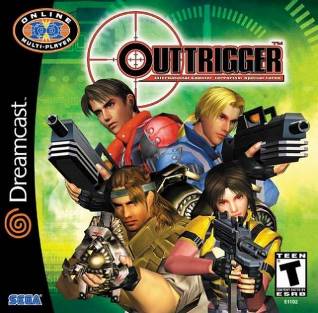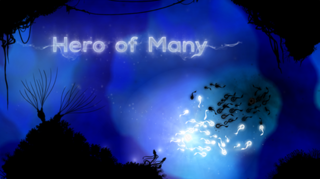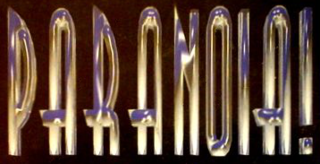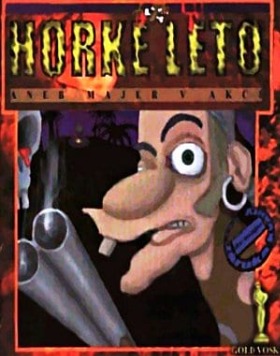Related Research Articles

Magic Carpet is a 3D flying video game developed by Bullfrog Productions and published by Electronic Arts in 1994. Its graphics and gameplay were considered innovative and technically impressive at the time of its release.

Pac-Attack, also known as Pac-Panic, is a 1993 falling-tile puzzle video game developed and published by Namco for the Super Nintendo Entertainment System and Sega Genesis. Versions for the Game Boy, Game Gear and Philips CD-i were also released. The player is tasked with clearing out blocks and ghosts without them stacking to the top of the playfield — blocks can be cleared by matching them in horizontal rows, while ghosts can be cleared by placing down a Pac-Man piece that can eat them. It is the first game in the Pac-Man series to be released exclusively for home platforms.

Turok: Rage Wars is a first-person shooter video game developed by Acclaim Studios Austin and published by Acclaim Entertainment. It was released for the Nintendo 64 video game console in 1999. Rage Wars is a game in the Turok video game series, with a heavy emphasis on multiplayer. It supports a maximum of four players simultaneously via split-screen. The game also supports the Nintendo 64 Expansion Pak for high-resolution graphics, but does not require it. A separate game, also titled Turok: Rage Wars, which is set in the same universe but features a different gameplay and storyline, was released for the Game Boy Color in 1999.

Bomberman, also known as Dyna Blaster in Europe, is an action-maze video game originally developed and published by Hudson Soft for the PC Engine in Japan on 7 December 1990 and later in North America for the TurboGrafx-16 by NEC in 1991. Belonging to the Bomberman franchise, it is a re-imagining of the first game in the series starring White Bomberman on a quest to rescue Lisa, the kidnapped daughter of his inventor Dr. Mitsumori, from the castle of Black Bomberman while defeating evil monsters and villains that work for him. The game was later ported to home computers, each one featuring changes compared to the original version. Conversions for other platforms were in development but never released. The title garnered positive reception from critics since its initial release on the PC Engine/TurboGrafx-16 and later on home computers.

Outtrigger is a first/third-person shooter video game developed by Sega AM2 for the Sega NAOMI arcade cabinet and the Dreamcast. The game was originally released in 1999 for the arcades and was later ported over to the Dreamcast in 2001. The player character of Outtrigger is a member of an anti-terrorist group, and can be chosen between default characters with different specialties or a custom character, and can utilize a number of power-ups. Reception to Outtrigger was generally positive, praising the gameplay and mechanics, though criticizing the removal of online play in the European version of the game.

Star Wars Jedi Knight: Mysteries of the Sith is an expansion pack for the 1997 first-person shooter Star Wars Jedi Knight: Dark Forces II, developed and published by LucasArts for Microsoft Windows in 1998. It was re-released on Steam in September 2009. The expansion includes a new single-player story mode and fifteen multiplayer maps. The single-player story, set in the fictional Star Wars expanded universe five years after the events of Dark Forces II, follows both returning protagonist Kyle Katarn, a Jedi Master and mercenary working for the New Republic, and Mara Jade, a character featured in numerous Star Wars expanded universe works, who is being trained by Katarn in the Jedi arts. After Katarn goes missing while investigating an ancient Sith temple, Jade continues her studies on her own while undertaking missions from the New Republic, eventually leaving to find Katarn.

Necromania: Trap of Darkness is a Role-playing video game developed by the Slovakian developer Darksoft Game Development Studio and the Czech company Cinemax. It was released in 2002 in Russia and later worldwide. The player can choose one of Ragnar's minions that he wants to play as.

Hero of Many is an independent video game developed by Trickster Arts. It is an Action-adventure game for Android, iOS, Ouya and Windows. The Windows version was released on Steam on 15 September 2014. The game contains no dialogue and uses black silhouette graphics similar to Limbo. Hero of Many was inspired by the games Another World, Heart of Darkness and Abe's Oddysee.
The video game industry in the Czech Republic has produced numerous globally successful video games such as Operation Flashpoint: Cold War Crisis and the subsequent ArmA series, the Mafia series, Truck Simulator series, the Kingdom Come: Deliverance series, the Samorost series and others. There were 300–400 video game developers and around 30 video game companies focusing on video game development in 2014. In 2017 it was 1,100 developers and 47 companies. Video games are also considered by some experts to be the country's biggest cultural export. The video game industry did not enjoy a good reputation and was unsupported by the state until 2013, when the Ministry of Industry and Trade started to seek ways to kickstart the economy. By 2014, programs were planned to support the video game industry. Another problem is a lack of video game development specialization at any university.

Paranoia! is a Czech conquest science fiction video game and a clone of Dune II. It was developed by Phoenix Arts in 1995 and distributed by Vision and later by MEC. It is the first Czech RTS. A sequel, Paranoia II, was released the following year.

Czech Game of the Year Awards are annual awards that recognize accomplishments in video game development in the Czech Republic. The awards began as part of Gameday Festival in 2010, but became independent from the festival in 2017. The awards are organised by the České Hry association.

Dark Train is a 2016 puzzle adventure game by Paperash Studio. It was released on 25 October 2016. Dark Train is described as an atmospheric adventure game with unconventional game mechanics. The game uses elements of steampunk and noir fiction mixed with fantasy elements.

Tajemství Oslího ostrova, known in English as The Secret of Donkey Island, is a 1994 Czech point-and-click adventure video game. Distributed by Petr Vochozka through his company Vochozka Trading in June 1994, it was the first nationally distributed PC game in the country and one of the first Czech games commercially available. A parody of the successful Monkey Island series, the story plays out as if it were a direct sequel to The Secret of Monkey Island, ignoring the continuity of Monkey Island 2: LeChuck's Revenge.

Dračí historie is a 1995 DOS-based adventure game developed in the Czech Republic by NoSense. It was the first-ever Czech game to include dubbing and released on CD. The game was last updated in 2006. The dubbing was also translated into Polish and subtitles were translated into English and German.

Belegost is a 1989 Czech text adventure for the ZX spectrum and Atari ST. It is considered part of the textovka genre—the Czechoslovak text adventure industry.

Léto s Oskarem is a 1998 Czech adventure game authored by Pavel Širůček and distributed by Vochozka Trading.

Horké léto is a point-and-click video game. Developed by Czech studio Maxon, it was published in 1998 by JRC Interactive. A sequel, entitled Horké léto 2, was developed by Centauri Production and published in 1999 by JRC Interactive. A third game Žhavé léto 3 ½ is an action/adventure/driving game developed by Centauri Production and CINEMAX, published by Akella in 2006, which although unable to use the characters and titles of the first two games was related and rounded off what was effectively a trilogy. Žhavé léto 3 ½ was published in English, Spanish, French and German as Evil Days of Luckless John and in Russian as Сорвать Куш.

Colony 28 is a science fiction-themed platform game developed for MS-DOS by Napoleon Games and published by JRC Interactive in 1997.

Tears was a planned Czech 1997 RPG video game developed by Hypnomagic and published BBS Interactive Multimedia for DOS. In production as of 1995, it had a planned release date for 2001 but was never completed.

Matcho is an upcoming video game by FiolaSoft Studio. It is a mix of First-person shooter and Match 3 game. It is set in the same universe of FiolaSoft previous game Blackhole.
References
- ↑ "České logické a akční hry". iDNES.cz. 21 September 1999. Retrieved 31 March 2018.
- 1 2 "Lurid Land". www.databaze-her.cz (in Czech). Retrieved 31 March 2018.
- ↑ "Herní karty - od E do L". ceskehry.wz.cz. Retrieved 31 March 2018.
- ↑ "České a slovenské hry pod koly času". Games.cz (in Czech). Retrieved 31 March 2018.
- 1 2 3 "Lurid Land". Riki. 32 (6/1998): 33. 5 June 1996. Retrieved 31 March 2018.
- 1 2 Erben, Lukáš (1 June 1997). "Lurid Land". Score. 42 (6/1997): 91. Retrieved 31 March 2018.